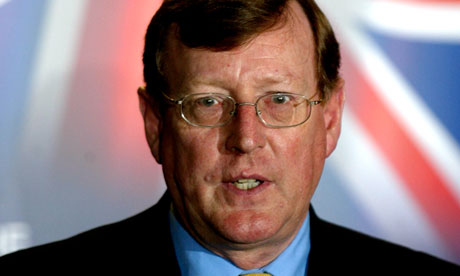Key Events & Deaths on this day in Northern Ireland Troubles
26th April
———————————————
Saturday 26 April 1969 Loyalist Bomb
There was another explosion at a water pipeline carrying supplies to Belfast.

[It was later established that the bomb was planted by Loyalists who were members of the Ulster Volunteer Force (UVF) and the Ulster Protestant Volunteers (UPV). Much of Belfast was without water following the latest explosion. See 30 March 1969.]
Thursday 26 April 1984 The Ulster Unionist Party (UUP) issued a series of proposals for the future of Northern Ireland. The UUP suggested that the area should have a regional council with administrative powers.
Tuesday 26 April 1988

Two members of the security forces were killed in separate incidents. A delegation from the Social Democratic and Labour Party (SDLP) met with Tom King, then Secretary of State for Northern Ireland, at Stromont.
Friday 26 April 1991
There was a meeting of the Anglo-Irish Intergovernmental Conference. This was the last meeting for a 10 week period to allow talks to take place between the political parties.
Tuesday 26 April 1994

Joseph McCloskey (52), a Catholic Civilian, was killed by the Ulster Freedom Fighters (UFF), a cover name (pseudonym) used by the Ulster Defence Association (UDA), at his home, Lepper Street, New Lodge, Belfast.
Wednesday 26 April 1995
The Independent Police Complaints Commission for Northern Ireland reported that the number of complaints made against the Royal Ulster Constabulary (RUC) during 1994 was 2,503. This represented an increase of 16 per cent over the figure for 1993.

The Irish News (a Belfast based newspaper) claimed that there had been secret talks between the Northern Ireland Office (NIO) and the Irish Republican Socialist Party (IRSP). [The IRSP was considered to be closely aligned with the Irish National Liberation Army (INLA).]
Friday 26 April 1996

The Irish Republican Army (IRA) accepted responsibility for the bomb at Hammersmith Bridge, London (Thursday 25 April 1996). Jim Nicholoson, then Chairman of the Ulster Unionist Party (UUP), stepped down as UUP Chairman. Dennis Rogan, then Vice-Chairman of the UUP, succeeded him.
Sunday 26 April 1998
An Orange Order parade was banned from walking along the mainly Catholic lower Ormeau Road in Belfast. Those taking part in the parade held a protest meeting at the police line. The march passed off peacefully.

Bertie Ahern, then Taoiseach (Irish Prime Minister), addressed a commemoration of the Easter Rising (which took place in 1916) in Dublin, and said that Britain had been “effectively ruled out of the equation” in regard to the future of Northern Ireland. The principle of consent, he said, was now the guiding factor in any future developments.
[The remarks were thought to have given the ‘No’ campaign a boost.]
Monday 26 April 1999

It was revealed that David Trimble, then leader of the Ulster Unionist Party (UUP), and Dennis Rogan, then Chairman of the UUP, were both facing expulsion from the Orange Order because they had attended the funeral mass of three of the victims of the Omagh bombing on 15 August 1998.
[The ‘Qualifications of an Orangeman’ expressly state that he should: “strenuously oppose the fatal errors and doctrines of the Church of Rome, and scrupulously avoid countenancing (by his presence or otherwise) any act of ceremony of Popish worship”.]
The results of an Ulster Marketing Surveys (UMS) opinion poll conducted for The Irish Times (a Dublin based newspaper) and Radio Telefis Éireann (RTE) were published.

The results suggested that the Good Friday Agreement would receive a slightly higher level of support, 73 per cent, among voters in Northern Ireland in the event of a second referendum. However, only half of those questioned in Northern Ireland felt that the Agreement would survive another year. Of those questioned a majority in Northern Ireland were also in favour of forming an Executive only after paramilitary weapons were decommissioned.
———————————————
Remembering all innocent victims of the Troubles
Today is the anniversary of the death of the following people killed as a results of the conflict in Northern Ireland
“To live in hearts we leave behind is not to die
– Thomas Campbell
To the innocent on the list – Your memory will live forever
– To the Paramilitaries –
There are many things worth living for, a few things worth dying for, but nothing worth killing for.
5 People lost their lives on the 26th April between 1976– 1994
———————————————–
26 April 1976

Rory Hawkins (27)
Catholic
Status: Civilian (Civ),
Killed by: British Army (BA)
Died two weeks after being shot during altercation with British Army (BA) patrol outside LESA Social Club, Clyde Street, Short Strand, Belfast.
———————————————–
26 April 1986

Seamus McElwaine (25)
nfNI
Status: Irish Republican Army (IRA),
Killed by: British Army (BA)
From County Monaghan. Shot by undercover British Army (BA) members while approaching abandoned Irish Republican Army (IRA) land mine, Mullaghglass, near Rosslea, County Fermanagh.
———————————————–
26 April 1988

Edward Gibson (22)
Protestant
Status: Ulster Defence Regiment (UDR),
Killed by: Irish Republican Army (IRA)
Off duty. Shot while working as bin man, Moortown, near Ardboe, County Tyrone.
———————————————–
26 April 1988

Lyndon Morgan (20)
nfNI
Status: British Army (BA),
Killed by: Irish Republican Army (IRA)
Killed by remote controlled bomb, hidden in gas cylinder, detonated when British Army (BA) foot patrol passed, Drumnakilly Road, Carrickmore, County Tyrone.
———————————————–
26 April 1994

Joseph McCloskey (52)
Catholic
Status: Civilian (Civ),
Killed by: Ulster Freedom Fighters (UFF)
Shot, at his home, Lepper Street, New Lodge, Belfast.
———————————————–

